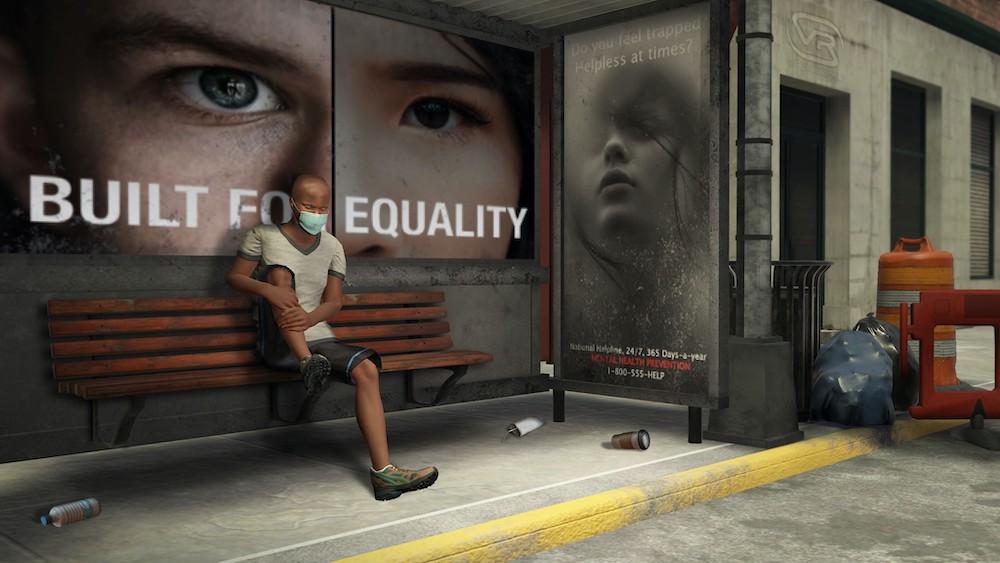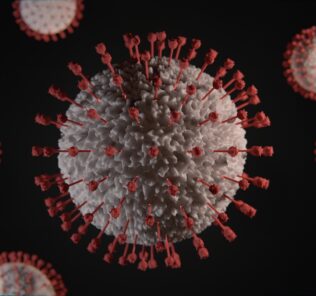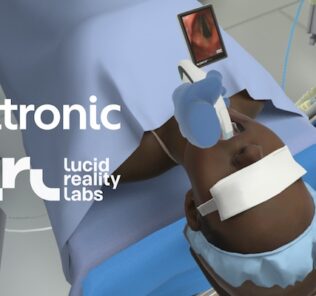How to Overcome EMS Training Impacts From COVID-19 with VRpatients
Recently the team from VRpatients shared with us this article entitled “EMS in a Post-COVID World: How the Pandemic Has Impacted First Responders and What This Means for the Future of EMS”. The COVID-19 pandemic has taught healthcare educators many lessons, forcing us to to adapt to an ever-changing situation. Here, we cover new EMS training recommendations from NAEMSE and take a look at how Virtual Reality training is helping Emergency Medical Responders recognize and deal with patients who may have the Coronavirus infection.
New recommendations from the National Association of EMS Educators Task Force address some of the challenges resulting from COVID-19, and how EMS agencies should approach education and care during this pandemic-era. Companies like VRpatients are reacting quickly to these recommendations and including information about COVID into new and existing scenarios.
Since the pandemic first began in earnest in mid-March, there has been a need to refresh training and get new information to EMS workers quickly and safely about how they should assess, treat, and transport patients.
Sponsored Content:
“In the field, there is obviously more awareness of personal protection,” says Duane Ginder, an experienced EMS worker, educator, and manager who serves as an EMS subject matter expert for VRpatients. “There is a need to get information from our dispatchers and relay that information to the EMTs and paramedics who are going to the scene so they can prepare themselves by putting on personal protective equipment (PPE) before they are met by a possible COVID patient.”
Information about COVID Transmission Has Changed
Researchers are constantly learning new information about how this particular coronavirus is transmitted.
The Centers for Disease Control and Prevention says it is possible for the virus to spread on surfaces, but the main way it spreads is through respiratory droplets an infected person produces while coughing, sneezing, or talking.
Sponsored Content:
Since an EMS worker must get close to a patient’s airway when trying to assess and treat them, the workers must take precautions to reduce their risk, which includes the use of PPE.
“The use of personal protection was always on their mind, but COVID-19 has certainly heightened their awareness of the need,” Ginder explains. “EMTs and paramedics have gotten very good at wearing gloves on calls, but as far as wearing masks and face shields and goggles, that really wasn’t on the forefront of their minds and this has really changed that.”
CDC Recommendations for EMS Workers
The CDC recommends EMS workers take several new safety precautions which may not have been part of protocol just several months ago.
For interactions where COVID-19 is suspected or confirmed, the CDC suggests:
- A fit-tested NIOSH-approved N95 or higher-level respirator or facemask
- Disposable examination gloves
- Eye protection like a face shield or goggles
- Gown or coveralls
It’s also important to place a face covering over a patient’s nose and mouth if it is possible to do so without impacting their condition. Making these new recommendations part of an EMS worker’s routine and muscle memory takes practice and training.
“It is very hard to change habits and bring new skills and awareness to people who have been doing it the way they have been doing it for years,” Ginder says. “It has been my experience as a manager that telling people to do something rarely completes the cycle of learning and changing behaviors. Changing behaviors takes repetition, takes modeling, and takes reinforcement.”
All of this recommended safety gear is now a part of the PPE used in scenarios in VRpatients.
“We upgraded the program to accomplish that,” Ginder says. “Having adaptable training allows us to treat the patient in real-life situations and treat them in real-life ways. It’s not effective for a student to say, ‘I’m going to put on PPE’ and just make a statement. There needs to be an action to instill that behavior in them so when they are put in a real-life situation, they remember to have that PPE in place.”
It’s a new way of thinking that involves more than just the emergency calls. “A lot of EMTs would always say they’re protecting the patient they’re there for the patient,” Ginder says. “I think COVID has taught us I need to protect myself and by doing that, I also protect the loved ones I’m going home to.”
Changing the Way EMS Workers Train
Since physically gathering students together in groups is not possible, being able to train EMS workers remotely about how to assess a COVID patient or anyone with a communicable disease is important.
The NAEMSE guidelines further advise “creating hybrid and distance-based delivery programs to support EMS education for all learners.” Ginder takes it even one step further, saying it does a disservice to students to use tools like videos or other online applications that do not show proper PPE usage.
“Without that ability in training to protect the caregiver and to have that caregiver go through the process of putting on their gloves, their mask, a gown, and a face shield, it wouldn’t be preparing them properly to put them into that real-life situation,” he says.
Tools like VRpatients provide remote training in real-life situations without real-life consequences. It mitigates real exposure risk while allowing students to think about what they need to do before they arrive on scene.
“With VRpatients, we have an array of PPE that the students or caregivers can select to have in place or put on themselves or the patient based on the case they are running,” Ginder explains. “Reinforcing that behavior change without the risk of exposure is a huge benefit.”
Assessing a Patient with Possible COVID-19 Symptoms
Changes have also come in the questions EMTs and paramedics should ask patients. It is important to ask several questions relevant to COVID-19 that we may not be used to asking. These questions are now part of training in VRpatients scenarios.
- Can you tell me how you’re feeling?
- How long have you felt this way?
- When was the last time you have taken your temperature?
- Have you taken anything for this?
- Have you been traveling recently?
- What type of medical history do you have?
- Do you take any medications?
- Are you allergic to anything?
Both new and experienced EMS workers can benefit from asking these types of questions and using PPE.
“New ways of training will get us better at protecting ourselves and the patients that are highly infectious,” Ginder says. “COVID is just one area. Patients have respiratory infections every fall and winter with the flu and other problems. We’ll be better at protecting ourselves because of this.”
As an industry leader navigating the remote learning world, the people at VRpatients know you are always looking to optimize your educational toolset. VRpatients increases knowledge retention and builds stress inoculation, all for a fraction of the price of traditional sim training.
Visit the VRpatients Website to Learn More Now!
Sponsored Content:

















